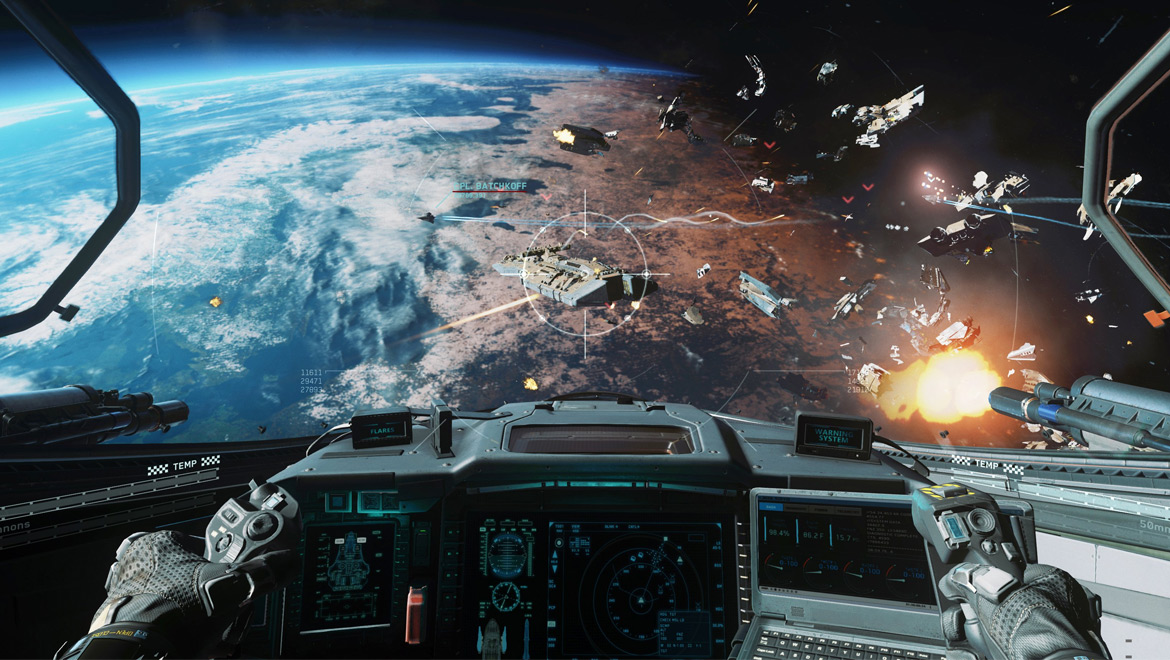

Just Space War IV, V, VI, until everyone gets it, the last stiff-necked mountain tribe, the last hermit kingdom. No Sommes, Verduns, or Iwo Jimas, probably not even any Vietnams or Afghanistans. Sterling, who dubbed these conflicts Space Wars I, II and III, argued that these operations successively demonstrated an increasing American lead in military capability, creating a situation in which there would still be the well-known tactics of terrorist groups at the low-intensity end of conflict, and the threat of weapons of mass destruction at the high end, but He characterized the United States as already the planet’s “astrocop,” patrolling an orbital beat and enforcing “world peace, Washington-style,” a pattern established by the 1991 Gulf War, the 1999 air campaign against Yugoslavia, and the 2001 overthrow of the Taliban. A nearer-term, less technologically radical version of this vision was the cover story of the April 2002 edition of Wired magazine, in which Bruce Sterling presented such dominance as a foregone conclusion.

Such schemes did not remain wholly the purview of defense planners and military theorists. With American dominance so complete, other militaries would be rendered so useless that they would wither away for only “constabularies and police forces need remain” apart from the aforementioned forces of the US and “a few morally coincident allies, such as the other English-speaking, law-cherishing states.” In the concluding chapter of his book Fighting for the Future: Will America Triumph? (1999) he depicts a future in which the United States enjoys complete, continuous and global battlespace dominance through a vast array ofĪttack systems deployed in near space that can, on order, destroy the vehicles, aircraft, missiles, and ships of any aggressor anywhere on the planet the moment a hostile actor violates or even threatens the territory of another state or entity-or uses military means to disrupt the internal rule of law in his own state… The least hostile military action would bring down a rain of fire from the heavens, destroying an attacker’s military inventory, whether he has deployed it, hidden it, or simply left it behind in garrison. Grandiose as all this sounds, the picture painted by JV 2020 is a modest one next to the visions propounded by military theorists like Ralph Peters. It also called for “the application of precision force from, to, and through space,” including “precision strike from space” with “Space-Based Earth Strike Weapons” adequate to supplant traditional air, land and sea forces in some missions during this time frame. The US Space Command’s February 1997 Joint Vision 2020 document, widely seen as a starting point for such thinking, called for the US to plan for “space defense and even space warfare,” extending beyond the development of “ballistic missile defenses using space systems” and the protection of American space assets through “robust negation systems” to the exercise of “control of space,” including the denial of the use of space to other actors. James’s famous warning about “Soviet conquest from space”-American space dominance (see “Space war and Futurehype”, The Space Review, October 22, 2007).

The dialogue on space warfare during the 1990s and early 2000s reflected such thinking, and as a result frequently looked like an inversion of Peter N. Sterling characterized the United States as already the planet’s “astrocop,” patrolling an orbital beat and enforcing “world peace, Washington-style”. In the early 2000s, something of this economic triumphalism survived the bursting of the dot-com bubble, and converged with the new respectability that military interventionism and neoconservative talk of American “empire” enjoyed in the aftermath of the terrorist attacks of 2001 to sustain the image of American predominance. Along with the economic stagnation of Japan and Germany, the tech boom convinced many in the US and abroad that the warnings of the “declinists” regarding such issues as the country’s deindustrialization, debt, and neglect of its infrastructure would either take care of themselves, or somehow prove irrelevant that the United States was not just the economic pacesetter for the world again, but had tamed the business cycle so thoroughly that its citizens could expect to enjoy the fruits of rapid growth indefinitely that the direction it had so often been criticized for was actually the only winning strategy in the information age. The collapse of the Soviet Union left many watchers of international affairs convinced that the United States enjoyed a “unipolar moment” that might last for decades. Space war and Futurehype revisited by Nader Elhefnawy Visions of fighting wars in, and from, space appear beyond the reach of a fiscally-constrained US military today.


 0 kommentar(er)
0 kommentar(er)
